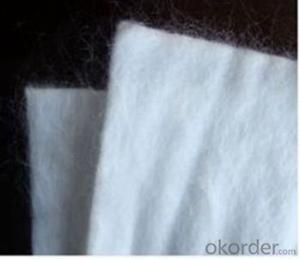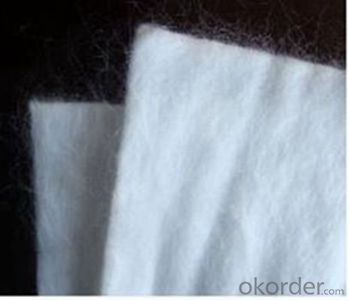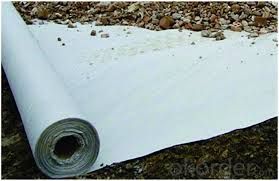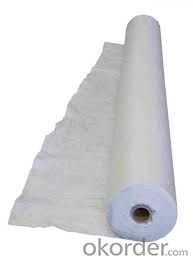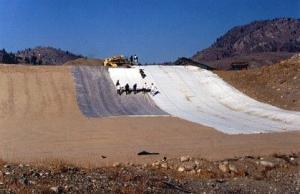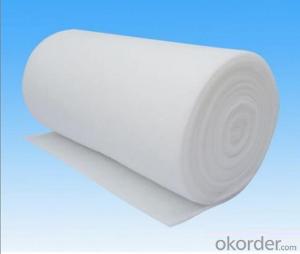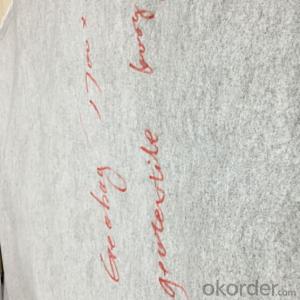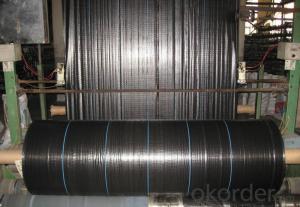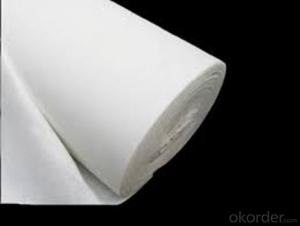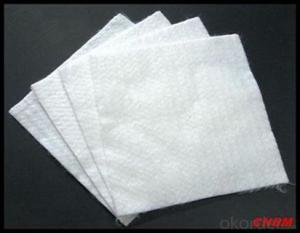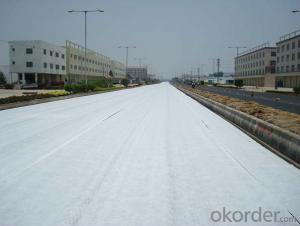Mirafi 180n Filament Geotextile Fabric for Dams Construction
- Loading Port:
- China main port
- Payment Terms:
- TT OR LC
- Min Order Qty:
- 3000 m²
- Supply Capability:
- 1000000 m²/month
OKorder Service Pledge
OKorder Financial Service
You Might Also Like
Specification
Introduction of Composite Geomembane with Nonwoven Geotextile:
It's made by non woven geotextile and PE/PVC geomembrane. Catagories are including geotextile and geomembrane, geomembrane wit non woven geotextile on both sides, non woven geotextile with geomembrane on both sides, multi-layer geotextile and geomembrane.
Specification:
1.One piece of geotextile and one piece of membrane;
Weight of base geotextile: 100-1000g/m2;
Thickness of geomembrane: 0.1-1.5mm.
2.Two piece of geotextiles and one piece of membrane;
Weight of base geotextile: 80-600g/m2
Thickness of geomembrane: 0.2-1.5mm.
3.One piece of geotextile and two pieces of membranes;
Weight of base geotextile: 100-1000g/m2;
Thickness of geomembrane: 0.1-0.8mm.
4. Multi-layers:Weight of base geotextile: 100-1000g/m2;
Thickness of geomembrane: 0.1-0.8mm.

Packaging & Shipping
Packing: PLASTIC FILM INSIDE, AND WOVEN BAG OUTSIDE
Shipping: About 15 days after receipt the deposit
pecifications
geotextile fabric
permeability,filtration,easy for construction
ISO and CE certificate
Good quality and competitive price
Our Service
Quality assurance
1.On a regular basis or as per your request,we entrust national testing agencies to conduct quality inspections
2. Strictly in accordance with the ISO9001-2008 international quality system standard,we monitor and manage the whole process throughout production,quality testing,and measurement to ensure product quality
3. For quality-related construction delay or substandard construction(except for damage or losses due to customer’s responsibility or irresistible natural disasters),we have refunding,replacement,and repair services.We will respond to customers’ feedbacks on quality issues within 24 hours.
FAQ:
Q: What kind of payments does jenor support?
A: T/T, L/C, Cash are accepted.
Q: Do you charge for the samples?
A: Accordeing to our company policy, the samples are free, we only charge the freight fee. And we will return the freight fee during the next order.
Q: Can you produce according to customers' design?
A: Sure, we are professional manufacturer, OEM and ODM are both welcome.
Q: Do you have other products?
A: Yes, please check the pictures:
- Q: How do geotextiles improve the performance of geotubes?
- Geotextiles improve the performance of geotubes by providing reinforcement and filtration. They act as a barrier to prevent the loss of soil particles while allowing water to pass through, thereby enhancing the stability and strength of geotubes. Additionally, geotextiles help distribute loads evenly, reducing the risk of erosion and increasing the overall performance and longevity of geotubes.
- Q: Geotextile how to sample
- It is best in the middle of a piece of cloth cut 1 square meters on the line
- Q: How do geotextiles help with vegetation establishment in landscaping projects?
- Geotextiles help with vegetation establishment in landscaping projects by providing a stable and fertile environment for plants to grow. They prevent soil erosion, control weed growth, retain moisture, and promote healthy root development. Additionally, geotextiles protect plants from foot traffic damage and allow for proper drainage, resulting in successful and sustainable vegetation establishment.
- Q: 25og / m2 filter geotextile is what
- 250g / square meters of geotextile, I am specializing in production
- Q: How do geotextiles contribute to soil improvement in soft ground areas?
- Geotextiles contribute to soil improvement in soft ground areas by providing reinforcement and stabilization. They act as a barrier to prevent the mixing of soil layers, reducing settling and heaving. Geotextiles also enhance drainage and filtration, allowing water to pass through while retaining soil particles. This helps in preventing erosion, maintaining the integrity of the soil, and improving its overall stability.
- Q: Can plant roots penetrate geotextiles? Which kind of similar material can keep soil and water and let the plant roots pass through it?
- Of course. The roots of plants are omnipotent, and it has a strong vitality. It is small, but its power is infinite. It is also because it is small, it makes it seamless no omnipotent. It can wear the river across the sea, it can wear stone to break the ground, it is powerful you can not imagine, you do not see the cliffs on the grass, the king did not see the plow of the fern leaves!
- Q: How do geotextiles help with asphalt overlay?
- Geotextiles help with asphalt overlay by providing reinforcement and stabilization to the underlying soil, preventing it from shifting or settling. This helps to increase the longevity and durability of the asphalt overlay, as well as reducing the occurrence of cracks and potholes.
- Q: Thank you, great gods
- Polyester short wire, polyester filament, polypropylene geotextile, filament woven geotextile, and so on. I professional production geotextile geomembrane and other geotechnical materials, a professional construction of the welding team, wish smooth
- Q: Can geotextiles be used for erosion control in construction sites?
- Yes, geotextiles can be used for erosion control in construction sites. They are commonly employed to stabilize soils and prevent erosion by providing a barrier against water and wind. The geotextiles can be installed in various ways, such as on slopes, embankments, or beneath vegetative cover, to effectively control erosion and promote soil stability during construction activities.
- Q: Are geotextiles resistant to fungal growth?
- Yes, geotextiles are generally resistant to fungal growth due to their synthetic nature and the materials they are made from.
Send your message to us
Mirafi 180n Filament Geotextile Fabric for Dams Construction
- Loading Port:
- China main port
- Payment Terms:
- TT OR LC
- Min Order Qty:
- 3000 m²
- Supply Capability:
- 1000000 m²/month
OKorder Service Pledge
OKorder Financial Service
Similar products
Hot products
Hot Searches
Related keywords
